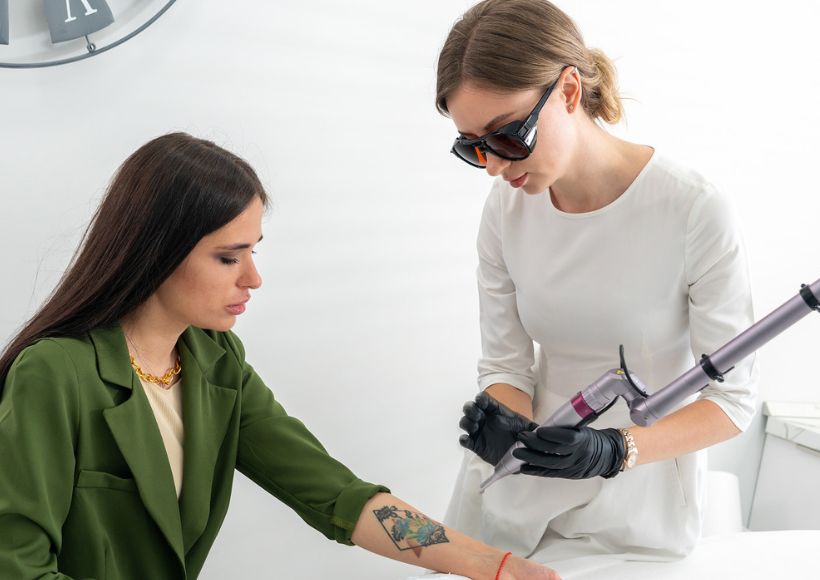Careful aftercare is extremely important for successful tattoo removal. This is the only way to avoid unsightly side effects such as wound infections, scarring or pigment disorders. It does not matter which method of tattoo removal is used – whether laser treatment, dermabrasion or surgery.
Ultimately, all variants lead to an injury to the skin, which then requires proper care. This includes not only treating the area with a wound and healing ointment. There are also a number of important points to be considered, one of which is related to sports.
Sport after tattoo removal
Basically, after a tattoo removal, wound healing comes first. For this reason, the skin should not be unnecessarily irritated, as is the case, for example, with a muscle contraction. Here the skin starts to move a lot and the healing is worsened. This is particularly the case with strength sports, bodybuilding and certain forms of endurance sports, which is why sports should be avoided for a week after each treatment.
In any case, the treated area should not be put under too much strain and care should be taken to ensure that no sweat gets into the wound. This can lead to inflammation. Therefore, it also depends on the position of the tattoo, how quickly you can do sports again. It is best to talk to your specialist doctor who will carry out the tattoo removal.
The tattoo removal method also influences how quickly sports can be resumed:
Laser method : Here, the color particles of the tattoo are shattered with light of a specific wavelength and transported away by the body’s own lymphatic system. Several sessions are necessary to remove a tattoo, which take place at intervals of a few weeks. After each laser treatment, a wound develops that requires adequate care. To prevent complications such as infection, you should avoid exercising for a week after each session.
Dermabrasion : In this method, the affected area of skin is abraded. This is done with a fine wire brush or diamond cutter. Here, too, several sessions may be necessary to remove the motif and sport should be avoided for a week after each application. This allows the skin to regenerate sufficiently.
Surgical intervention: During the surgical removal of a tattoo, the motif is cut out of the skin under anesthetic. The body is not only stressed by the anesthesia, the healing process also takes longer here than with the other two methods. However, this is a one-time treatment and after a few weeks, once the wound has healed, you can carefully start exercising again.
support of the healing process
In general, during the tattoo removal process, care should be taken to strengthen the immune system. This promotes wound healing. Eat healthy, drink plenty of water, get enough sleep and get some fresh air. Instead of excessive sport, you can bring exercise into everyday life with quiet walks and thus bridge the initial time until healing.
This is how you get your circulation going without straining your body. You should avoid stimulants such as cigarettes or alcohol during this time, as these toxins are counterproductive for healing. Likewise, swimming pools, saunas or solariums should be avoided.
Also Read : Horseback Riding, Handball, Gymnastics: These Types Of Sport Have a High Risk Of Injury

